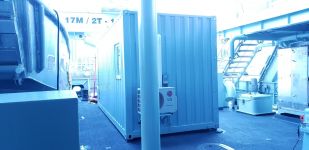FJAG
Army.ca Legend
- Reaction score
- 13,780
- Points
- 1,160
I think in fairness to the Army, its various transformation initiatives were also thoroughly analyzed. I quite frankly do not have enough knowledge of maritime strategy or operations to be able to tell if the Leadmark methodology is sound or better than the Army's or not.Perhaps the Army could give the Navy’s ‘Leadmark’ methodology a look to ensure that assumptions in its assessment/mission analysis have a stronger element of strategy to balance its strong sense of tactical acumen?
However, when I look at "Future Force: Concepts for Future Army Capabilities" published by the Army's Directorate of Land Strategic Concepts in 2003 and the first versions of Advancing With Purpose and see their nod towards the reality of Canada needing to maintain an army capable of up to full-spectrum operations and then see the project's outcome as anything but that. One can only conclude that the builders of the system, for various reasons, became overly enamoured with the concept of the touted rapid deployability of the nascent Stryker brigades; a capability that remains mostly unfulfilled to this day.
Effectively, the strategic analysis that the Army made included a need for full-spectrum ops. The unstated assumption made by Army planners was that they would most probably not be involved in such operations and, as a result, the force today, as built, does not have many of the key enablers and capabilities needed for full spectrum operations. Right from the beginning the plan was to shed the "heavy" capabilities as unnecessary and as the years went by they continued down that rabbit hole.
I think if one tried to put that into a naval context it would be to design the CSC as stated but then as they go along start shedding the air/missile defence components and then the anti-ship components and finally the anti-submarine components until all that is left is one rapid fire gun on the foredeck. The ship can still go to sea and can still do a lot of peacetime stuff, but go to a peer war ... no.





